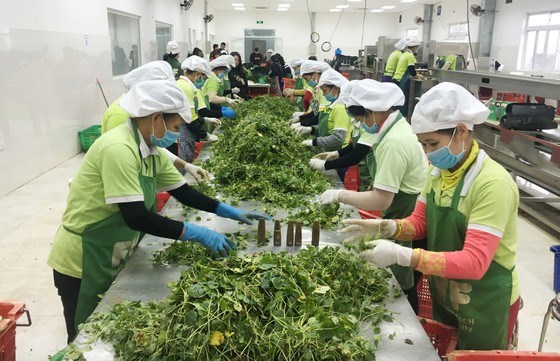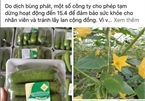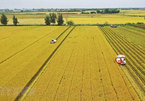 |
|
Illustrative image (Photo: sggp.org.vn) |
Rosy signs for processing industry
Dried fruit, especially mango, and passion fruit juice generated the largest export value, the Ministry of Industry and Trade (MoIT) has reported.
The positive growth is down to growing investment in the processing industry over recent years, with up to 30 major projects on processing farm produce, valued at about 1 billion USD, implemented during the 2018-2019 period, according to Dang Phuc Nguyen, Secretary General of the Vietnam Fruit and Vegetables Association (Vinafruit).
Unlike other sectors, processed fruit and vegetables have not been overly impacted by COVID-19 because of their convenience and longevity, he added, suggesting that exports of such products be boosted in order to raise revenue.
The Ministry of Agriculture and Rural Development (MARD) said the export value of processed agricultural products is rising 7-8 percent annually and more than half of processing facilities for major agricultural exports have been equipped with cutting-edge technologies.
There have been production, preservation, processing, and consumption clusters for agricultural products along with concentrated material areas, contributing to spurring rural economic development, building new-style rural areas, and generating jobs for farmers.
It is noteworthy that Vietnam has signed several new-generation free trade agreements (FTAs) that enable it to expand farm produce exports, especially processed products.
However, existing processing technologies for only a few items like cashew nuts, coffee, rice, shrimp, and tra fish, meet regional and international standards, MARD added.
Looking at fastidious markets
Many Vietnamese companies are yet to secure the supply of materials while linkages in the value chain from production, processing to consumption have remained loose.
Nguyen Lam Vien, Chairman of dried fruit producer the Vinamit JSC, said a number of businesses have invested in modern processing plants and focused on brand development.
Developing material areas, however, has remained a headache, he added, explaining that most agricultural companies do not possess fertile land in favourable geographic locations.
Nguyen from Vinafruit said, however, that the fruit and vegetable processing sector is indeed moving forward, and will be even better placed once the EU-Vietnam FTA (EVFTA) takes effect.
Local firms need to prepare standardised material areas in response to strict technical barriers in the EU market, he suggested, pointing to competition with neighbouring countries that have invested in technologies and stepped up the import of Vietnamese agricultural products to serve the export of processed products to the EU.
The State and enterprises therefore need to encourage farmers to join cooperatives to create large-scale fields and boost mechanisation.
“We can attract investment from the US, Japan, the Republic of Korea, Australia, and Israel, to promote intensive processing technologies,” Nguyen said.
MARD is now completing a draft project on developing the fruit and vegetable processing industry, with Vietnam targeting a place among the world’s top five countries in the sector.
To that end, Nguyen proposed quickly rolling out solutions such as preferential loans for agriculture, duplicating large-scale fields, establishing links between businesses and farmers, and building processing plants combined with material areas.
He also stressed the need to promptly complete a market forecasting and information system so that stakeholders can access information on and the trade policies of major markets./.VNA

Agricultural firms and cooperatives start selling online amid pandemic
Influenced by the pandemic, many agricultural production firms and cooperatives are developing their online trading channels to boost sales.

VN needs market of agricultural land
Agricultural land accumulation for large-scale production has been facing many obstacles, although the Government has pushed up the process by implementing several policies.